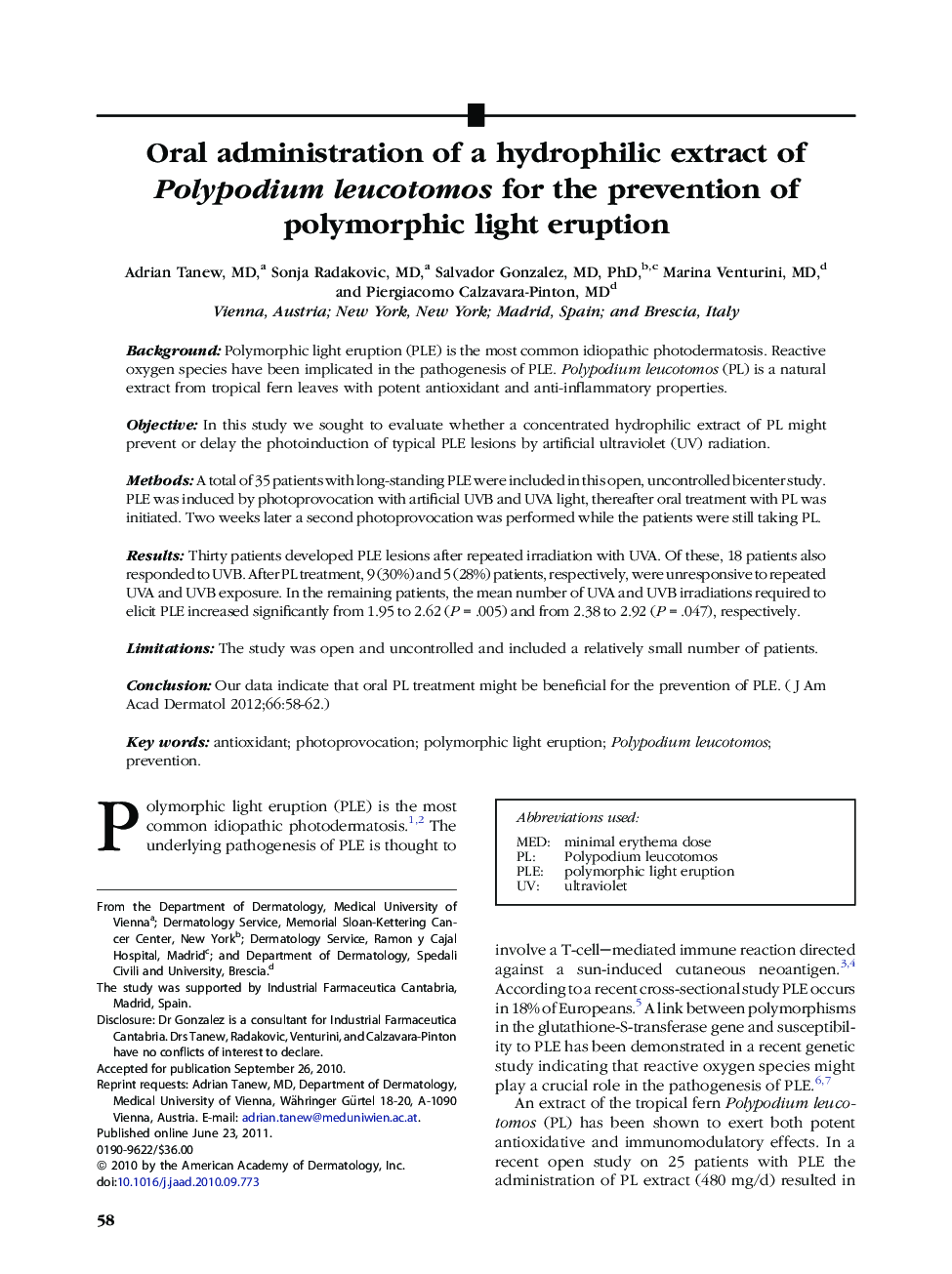| Article ID | Journal | Published Year | Pages | File Type |
|---|---|---|---|---|
| 3207256 | Journal of the American Academy of Dermatology | 2012 | 5 Pages |
BackgroundPolymorphic light eruption (PLE) is the most common idiopathic photodermatosis. Reactive oxygen species have been implicated in the pathogenesis of PLE. Polypodium leucotomos (PL) is a natural extract from tropical fern leaves with potent antioxidant and anti-inflammatory properties.ObjectiveIn this study we sought to evaluate whether a concentrated hydrophilic extract of PL might prevent or delay the photoinduction of typical PLE lesions by artificial ultraviolet (UV) radiation.MethodsA total of 35 patients with long-standing PLE were included in this open, uncontrolled bicenter study. PLE was induced by photoprovocation with artificial UVB and UVA light, thereafter oral treatment with PL was initiated. Two weeks later a second photoprovocation was performed while the patients were still taking PL.ResultsThirty patients developed PLE lesions after repeated irradiation with UVA. Of these, 18 patients also responded to UVB. After PL treatment, 9 (30%) and 5 (28%) patients, respectively, were unresponsive to repeated UVA and UVB exposure. In the remaining patients, the mean number of UVA and UVB irradiations required to elicit PLE increased significantly from 1.95 to 2.62 (P = .005) and from 2.38 to 2.92 (P = .047), respectively.LimitationsThe study was open and uncontrolled and included a relatively small number of patients.ConclusionOur data indicate that oral PL treatment might be beneficial for the prevention of PLE.
